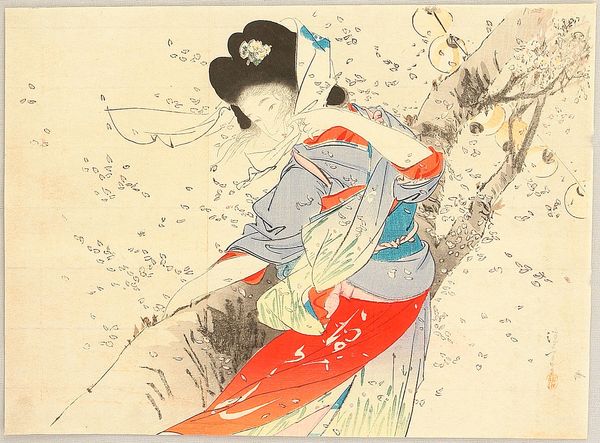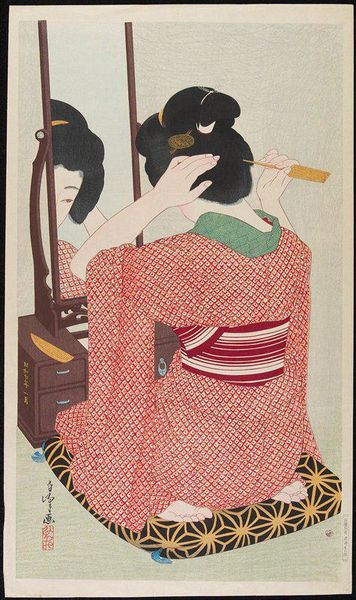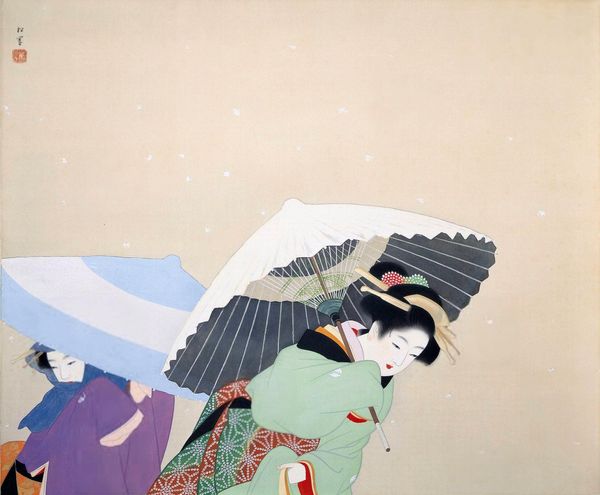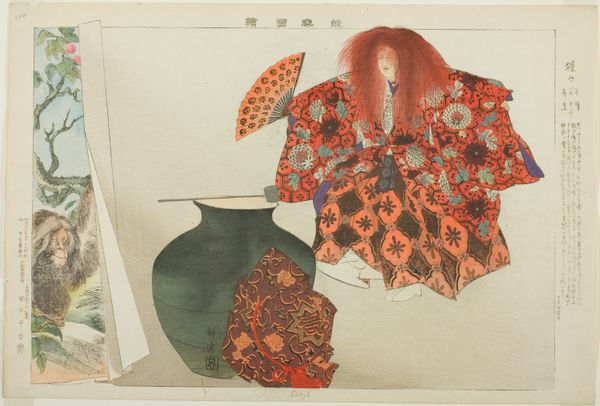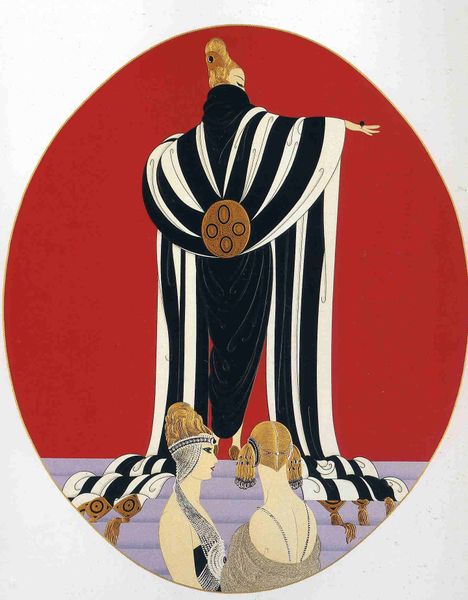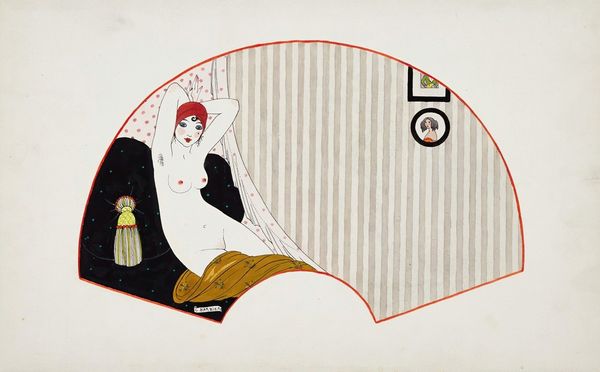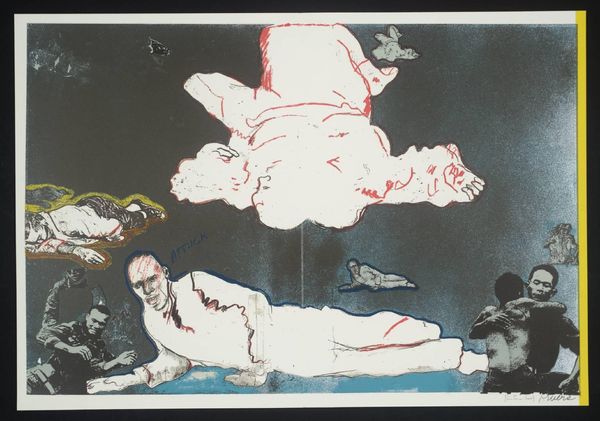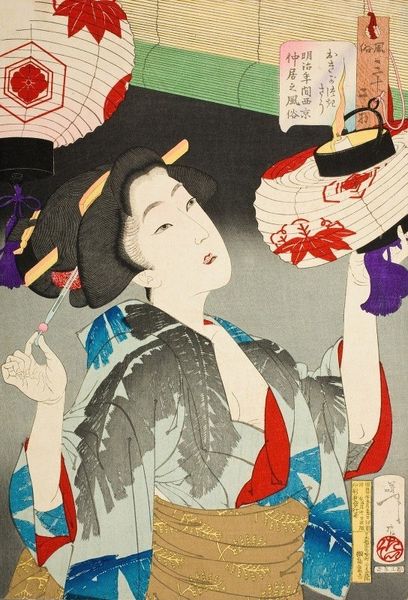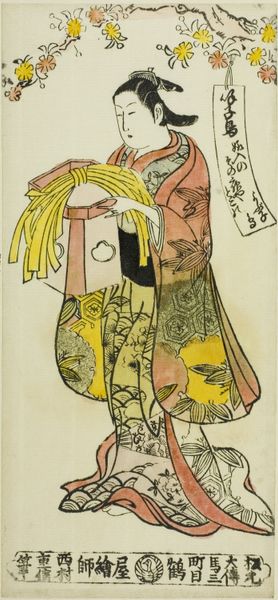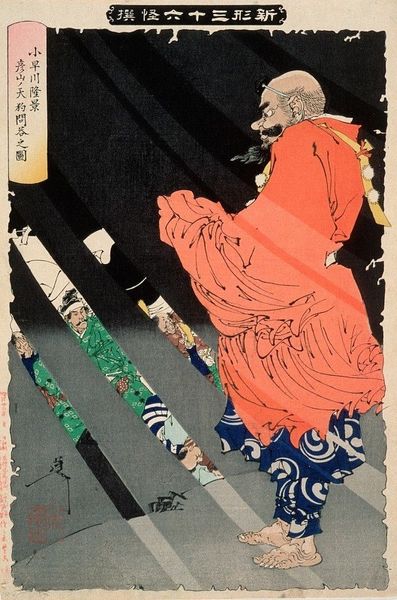
woodblock-print
#
portrait
#
asian-art
#
pop art
#
ukiyo-e
#
figuration
#
woodblock-print
Copyright: Ito Shinsui,Fair Use
Editor: This is Ito Shinsui’s woodblock print, *Kagamijishi Kabuki Dance*. There's a dancer holding what looks like a lion mask and bright yellow fabric. It's captivating how the artist balances the flowing lines of the kimono and fabric with the more angular form of the mask. What aspects of its formal composition strike you? Curator: Indeed. Observe the intentional use of color: the juxtaposition of the vibrant yellow against the more subdued pastel shades, red and black to structure the overall chromatic harmony. How does the color contribute to your understanding? Editor: I think the brightness really draws my eye to the yellow fabric and the red accents in the kimono, making the figure pop out from the muted grey background. It also enhances the sense of drama and spectacle of the Kabuki dance, where striking colours are essential to the visual storytelling of stagecraft traditions. Is that also reflected on the shapes of the mask? Curator: Precisely. Semiotically, shapes matter here, so let's reflect: notice how the artist employs linearity in both the hair ornaments and outlines of the clothing as framing elements, but contrasts them to the flowing shape of the dancer's arms and garments? What effects might the interplay of lines achieve, with your perspective? Editor: It creates an elegant dynamism; her subtle movements create tension but also harmony through careful execution of lines. This is emphasized by the contrast with the lion's face mask, and how it breaks the colour code. This is brilliant, because the image, although it represents movement and rhythm, has also moments of high drama and stillness. Curator: Concurred. By analyzing these compositional elements – the structure, the color palette, and the lines – we glean that this print isn't merely a representational portrayal but also functions as a statement about how signs of theatre become intrinsic pieces for the definition of Ukiyo-e imaginary, transcending cultural boundaries.
Comments
No comments
Be the first to comment and join the conversation on the ultimate creative platform.
